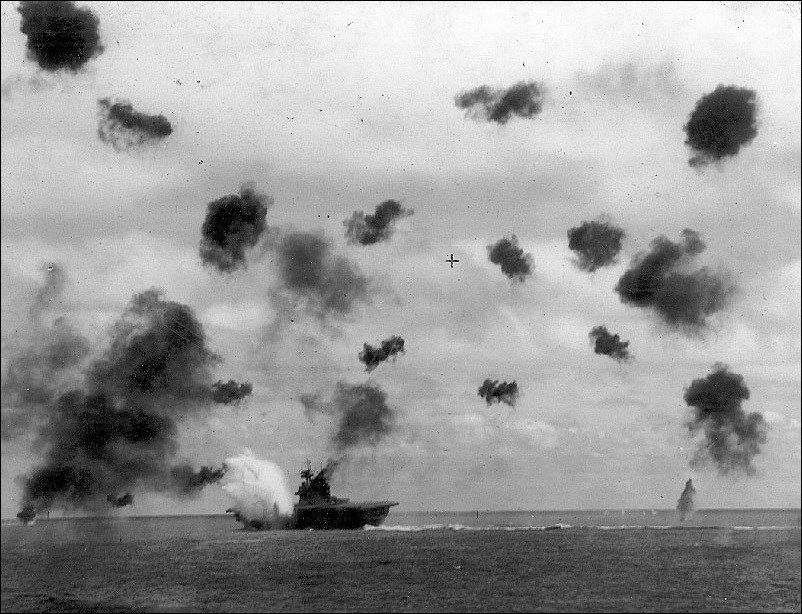The Battle of Midway, which took place from June 4-7, 1942, during World War II, was a crucial naval battle between the United States and Japan in the Pacific Theater. Prior to Midway, Japan had achieved numerous victories in the region, including the infamous attack on Pearl Harbor. However, the tables turned at Midway when American forces, armed with intercepted Japanese communications, were able to anticipate and decisively defeat the Japanese fleet. This victory marked a turning point in the war, demonstrating the effectiveness of American intelligence and setting the stage for further American advances in the Pacific, ultimately leading to the defeat of Japan in 1945.
The Battle of Midway
Background
The Battle of Midway took place from June 4-7, 1942, during World War II. It was a pivotal naval battle between the United States and Japan, and it is considered one of the most important battles in the Pacific Theater. Prior to the Battle of Midway, the Japanese had achieved several major victories in the Pacific, including the surprise attack on Pearl Harbor in December 1941. However, the Battle of Midway would prove to be a turning point in the war.
Japanese Strategy
The Japanese plan for the Battle of Midway was to lure the American aircraft carriers into a trap and destroy them, thereby eliminating the threat to their expansion in the Pacific. Japanese Admiral Isoroku Yamamoto believed that a decisive victory at Midway would force the United States to sue for peace, allowing Japan to consolidate its gains in the region.
American Intelligence
Unbeknownst to the Japanese, the United States had intercepted and decoded Japanese communications, allowing them to anticipate the Japanese plan. Armed with this intelligence, American forces were able to prepare for the Japanese attack and position themselves for a counterattack.
The Battle
On June 4, 1942, the Japanese began their assault on Midway Atoll, a strategically important outpost midway between Hawaii and Japan. However, American aircraft carriers were waiting for them, and a fierce battle ensued. American dive bombers and torpedo bombers managed to sink four Japanese aircraft carriers, effectively crippling the Japanese fleet.
Turning Point
The Battle of Midway marked a turning point in the war in the Pacific. The Japanese suffered heavy losses, including the loss of experienced pilots and aircraft carriers that could not be easily replaced. Meanwhile, the United States emerged victorious and gained the upper hand in the Pacific Theater.
Legacy
The Battle of Midway is often cited as a major turning point in World War II. It demonstrated the effectiveness of American intelligence and the skill and bravery of American pilots. The strategic victory at Midway paved the way for further American advances in the Pacific, ultimately leading to the defeat of Japan in 1945.
